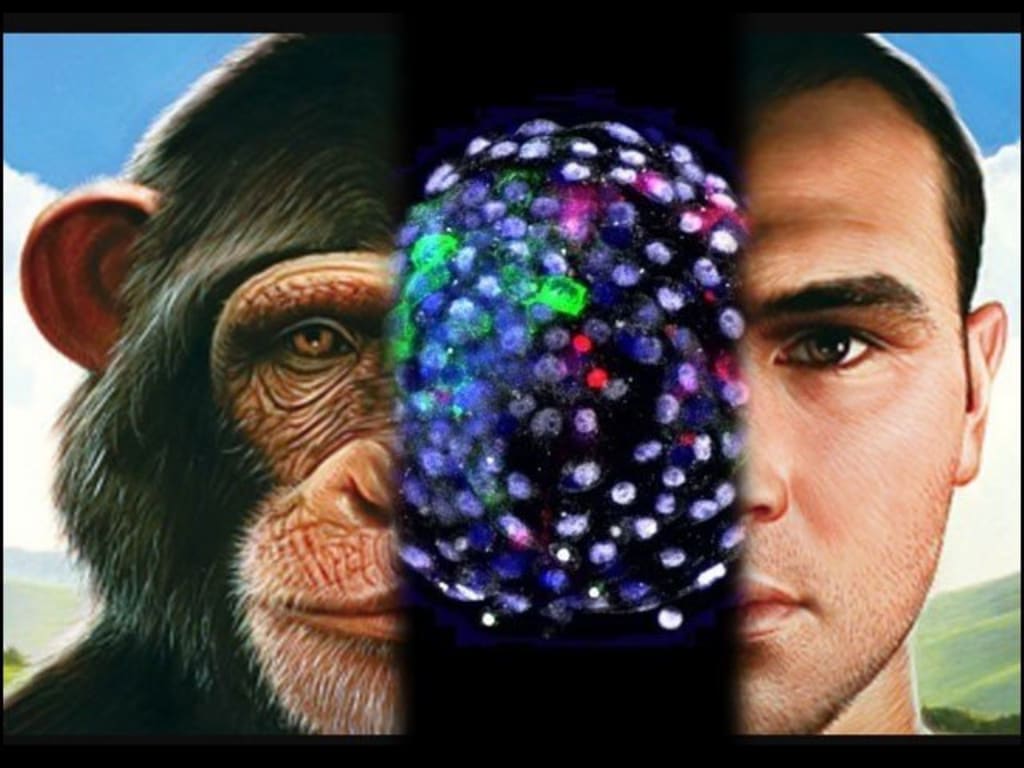World's First Humen Monkey Hybrid Created in China
Is it a preparation to make 'half a monkey, half a human' in a laboratory?

Yanan / California: In a joint experiment, Chinese and American scientists have developed living embryos that contain the most basic cells in humans and monkeys.
It should be noted that efforts to reconcile human and animal cells have been underway for at least the last twenty years, in which pig and sheep cells have been merged with human cells.
From a medical point of view, these efforts are part of the "Xenotransplantation", which aims to "grow" human organs in the body of an animal and re-transplant them into the same person.
Thanks to the success of xenotransplantation, it will be possible to insert a human body cell into an animal and "cultivate" an exact replica of the desired organ in that animal, which will be transplanted back into that human body.
There are more similarities between humans and monkeys than between sheep and pigs. For this reason, the question before scientists was, if the most basic cells of man and ape were mixed together, would they be able to grow together?
To find out, experts from the Kunming University of Science and Technology in the Chinese province of Yunnan and the Salik Institute for Biological Studies in the US state of California have jointly conducted this important research.
To make a hybrid of human and monkey, embryos of macaque monkeys were taken which were in the "blastocyst" stage, the stage in which the embryo is in the form of a hollow ball with only a few cells.
Although this is a significant breakthrough in scientific terms, it is also highly controversial because the same research could be used to create strange creatures like 'half -monkey, half man'.
This will go a long way in eliminating organ donation and other related issues for the affected people.
Professor Izpisua said at the time: "The ultimate goal is to grow functional and transplantable tissue or organs, but we are far away from that.
“This is an important first step.”
There are 6,500 people in the UK waiting for a transplant – including 150 children.
Every year, around 500 Brits die while waiting for an organ.
According to a report published in the latest issue of the online research journal "Cell", these experiments included 25 human stem cells (hEPSCs) in each monkey blastocyst.
With the help of fluorescent tagging, scientists monitored changes in monkey and human cells after mating. They found that initially 132 monkey embryos and human cells were successfully interconnected.
Of these, 103 mixed embryos survived for ten days and continued to develop.
However, after this stage, the mixed embryos began to die more rapidly, until, by the 19th day, only 3 mixed embryos survived.
However, given the limitations /requirements of the experiment, these embryos were also destroyed.

According to further details, these experiments were carried out in China because the facilities of such sensitive experiments are much better in China than in the United States, while Chinese scientists are also more skilled in this matter.
Experts involved in the experiment say that the combination in the cells of monkeys and humans was much better than in previous experiments.
The researchers want to use animals to create organs for human life-saving transplants. Ethical concerns were raised over the trial, partly over fears that human stem cells could migrate to the brain.
Angel Raya, of the Barcelona Regenerative Medicine Centre, said experiments on organisms with cells from two species faced “ethical barriers”.
He told El Pais: “What happens if the stem cells escape and form human neurons in the brain of the animal? Would it have consciousness? And what happens if these stem cells turn into sperm cells?”
But Estrella Nunez, of Murcia Catholic University (UCAM) and the project collaborator, said mechanisms were put in place so that if human cells did migrate to the brain, they would self-destruct.
About the Creator
Em Hoccane
Creative writer






Comments
There are no comments for this story
Be the first to respond and start the conversation.